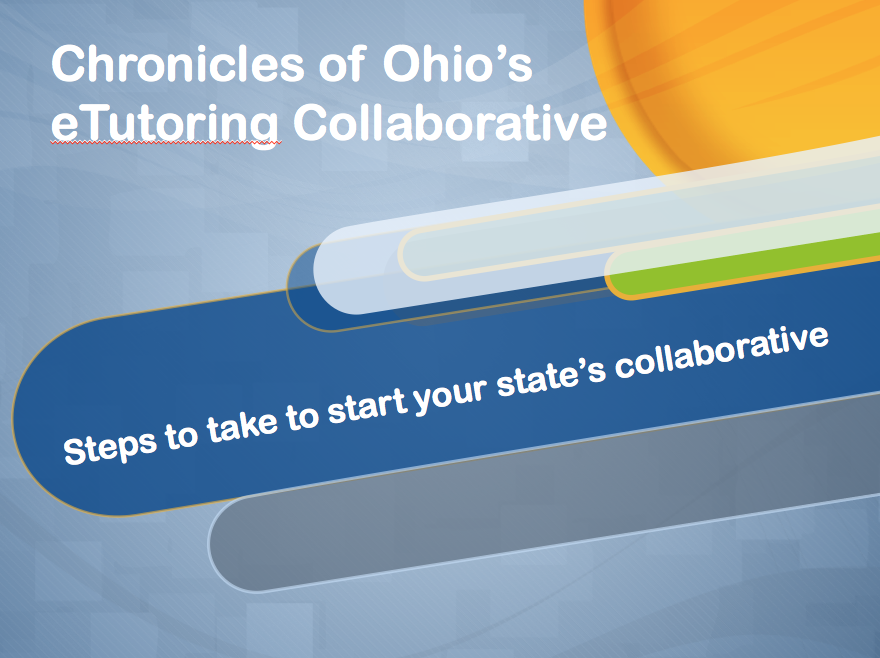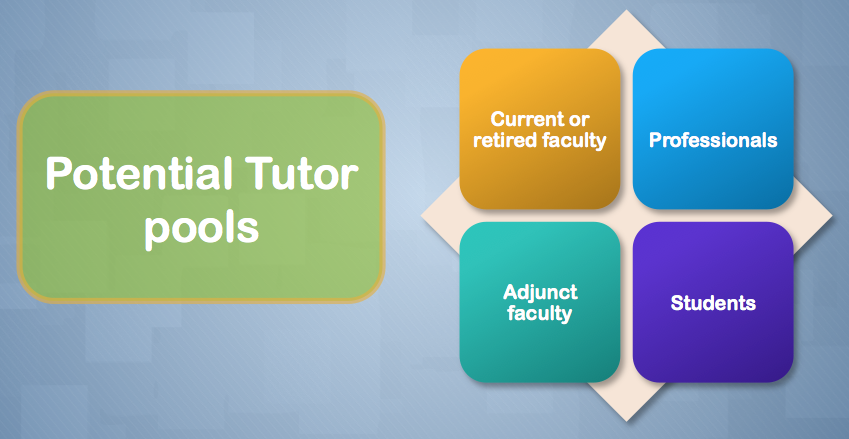Collaboration can be such a wonderful thing.
In the case of Ohio’s eTutoring Collaborative program, collaboration was not only the jumping off point, but it has also provided eStudent Services with a strong base on which to build since we began in 2009.

Understanding how a collaborative offers a cost-efficient and effective model for an eTutoring program was the focal point of a presentation my colleague Mitch Wilson and I delivered at the recent Association of Colleges for Tutoring and Learning (ACTLA) Conference. The presentation was titled, “Chronicles of Ohio’s eTutoring Collaborative and Steps to Start Your State’s Collective.”
eTutoring is becoming an integral tool that allows colleges a cost-effective and efficient way to maintain high standards despite reduced budgets. It’s wonderful for students because it provides a degree of anonymity and the convenience of being offered any time.
A big reason we were asked to speak at this conference is that Ohio has the largest single state collaborative of eTutoring across the continent. That’s because there is a great deal of support for a program that began as a grass roots collaborative effort and has blossomed across the state.
First, some background
eTutoring started as a pilot program in 2009 when schools came to us looking for a cost-effecting tutoring program. We used the eTutoring Platform, created by the Connecticut Distance Learning Consortium (CTDLC) and now used by 150 schools across North America.
At the time, the Ohio Learning Network had been underwriting part of the expense for schools to use a vendor-focused platform, and the cost became prohibitive. Discussions regarding a new service took place, and OLN went to the schools with the model and asked whether this new program might work. It was at that juncture that OLN and the schools created the collaborative. In fact, Ohio’s legislature wanted it to be specifically called a collaborative because legislators wanted to emphasize the aspect of working together to make it effective and cost-efficient.
We serve two-year and four-year schools, primarily undergraduate students, and we’ve grown from five schools in 2009 to 40 schools by 2012,again, thanks to a great deal of state support.
How can you get started?
1) What is your mission? Make certain your institution’s mission statement mirrors what you personally believe is your learning center’s mission.
2) Consider your steps. It doesn’t matter the path of the steps, but you should be sure to cover each of them.

- Beyond campus, does your state have a university system that receives state support and funding? Who oversees eLearning or online academic support services at the state level? You may choose to make this a grassroots effort and convene similar institutions to gauge interest in creating a collaborative.
- On campus, find your supporting cast members: Seek support from academic areas and disciplines that you have supported in the past. Potential tutor pools includecurrent or retired faculty, professionals, adjunct faculty, students and potential outside sources.
- Monitor, measure and communicate: It’s important that you come up with a way to measure your growth while monitoring student progress. As you are able to gauge growth, you can – and should – make sure you are communicating these successes to your leadership.
Our steady growth brought with it increased accessibility to students across the state. We also have a slew of Learning Center data that details everything from how much time is spent in certain subjects to how quickly we are able to review a paper and get it back to a student. Our successes have led to winning the CTDLC’s Diane J. Goldsmith Award for excellence in eTutoring in 2013 and 2014. These are the types of statistics that are critical to monitor and share with leadership so they understand the value of our program.
One last thought: A collaborative doesn’t have to be statewide; it could be a region, it could be people who know each other across campus. All you need is a group of people that wants to pull together and share efforts toward a larger goal. We’re proof of what collaborating can achieve.


